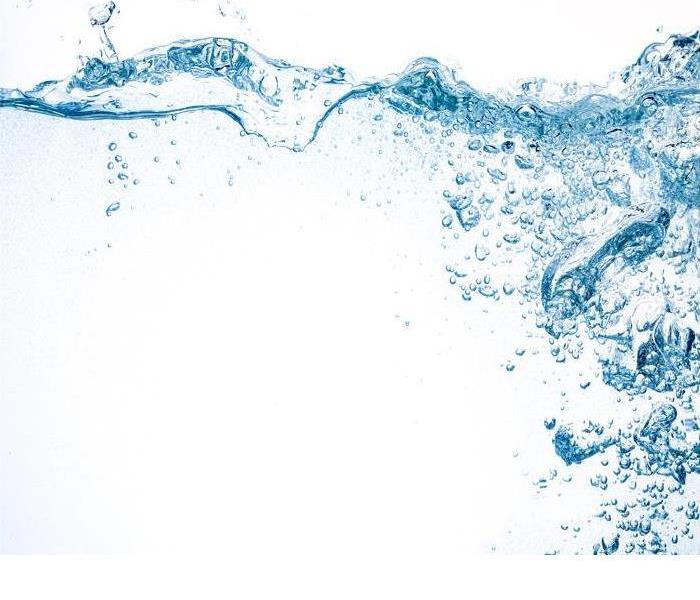How You Can Stop Water Damage from Occurring
6/21/2022 (Permalink)
How You Can Stop Water Damage from Occurring
You want to avoid water damage in a building at all costs. The damage that water can do is sometimes worse than a fire in older buildings. You need to be vigilant about a few important areas of the building. You can take a few steps to stop water damage from ever occurring.
Watch For Problems with Flashing
The flashing on the roof of the building can rust, fall off or become dislodged at any time. You want to constantly watch for problems with the flashing especially after storms or high wind. If you notice exposed flashing, rusted pieces or gaps around corners on the roof, then you need a contractor to repair that flashing immediately since water will have an easy path into the building.
Keep Gutters and Downspouts Clear and Repaired
Gutters and downspouts do the important work of preventing water from drenching exterior walls and pooling at the base of the building. You would have to constantly deal foundation damage and disintegrating walls without them. Keep the gutters and downspouts clear. Clean them out regularly to prevent debris from building up. If anything comes loose, then secure the gutter or downspout back to the building. Replace corroded or damaged sections. Consider using a gutter guard to block debris and a heating system to prevent ice dams.
Have Your Roof Inspected Regularly
Your roof could have any number of problems that you would never see without specialized training and tools. Those hidden problems could be allowing huge amounts of water to pour into the walls and rot away the framework of the building. You need to have your roof inspected regularly by knowledgeable professionals. You want to do this in the spring and the fall to check for damage between seasons.
Pay Attention to Plumbing Fixtures
Pay close attention to the plumbing fixtures. This could be any sink, drain or toilet. If they start running slow, losing pressure or backing up, then you have a potential issue that could already be causing water damage to the building. You need to be observant and call for help as soon as you notice anything unusual.
Think About Putting Drains or Pans in Key Areas
Floor drains and collection pans can stop water damage from occurring. They need to be put in key locations. Drains can go in bathrooms or basements. Collection pans can be set under hoses, appliances or even frequently used sinks.
Carefully Examine Your Plumbing Twice a Year
You want to walk through the building and examine the plumbing at least once every six months. Look for any signs that something is leaking such as mold, discolored floors or moisture on the fittings. Check the condition of the pipes. Have anything that is leaking, damaged or suspicious inspected and replaced by a plumber.
Have Your Sewer Lines Professionally Inspected
Schedule regular sewer line and backflow system inspections once every year or two. If the sewer line or backflow preventer breaks, then the building or foundation could be quickly flooded with wastewater. An inspection will ensure that everything is in good condition and working properly.
Have Primary and Backup Sump Pumps
If there is a basement, put primary and backup sump pumps in the building. The main pump will turn on once water causes a float to rise on the unit. The pump will remove water. The backup pump will activate if the first one fails or water is coming in too fast for one unit to handle.
Keep a Leak Repair or Management Kit Ready
Create a leak repair or management kit that includes things such as duct tape, a wrench, sheets of plastic and sponges. Keep mops near the kit and make sure everyone knows where it is. If someone can get to the kit quickly when a leak is detected, then it might be possible to prevent water damage until SERVPRO arrive.
Installed a Monitored Leak Detector
Put monitored leak detection systems in the building. These systems will alert you if water starts leaking or filling a room. If the system is monitored, then a live person can react to the alert by contacting you, the authorities or a service technician. Some systems will even shut off the water if a leak starts.
Our Water Damage Restoration Process
Every water damage situation is a little different, and requires a unique solution, but the general process stays the same. The steps listed below illustrate our process for the “typical” water damage emergency.
Step 1: Emergency Contact
Step 2: Inspection and Damage Assessment
Step 3: Water Removal/Water Extraction
Step 4: Drying and Dehumidification
Step 5: Cleaning and Repair
Step 6: Restoration






 24/7 Emergency Service
24/7 Emergency Service
